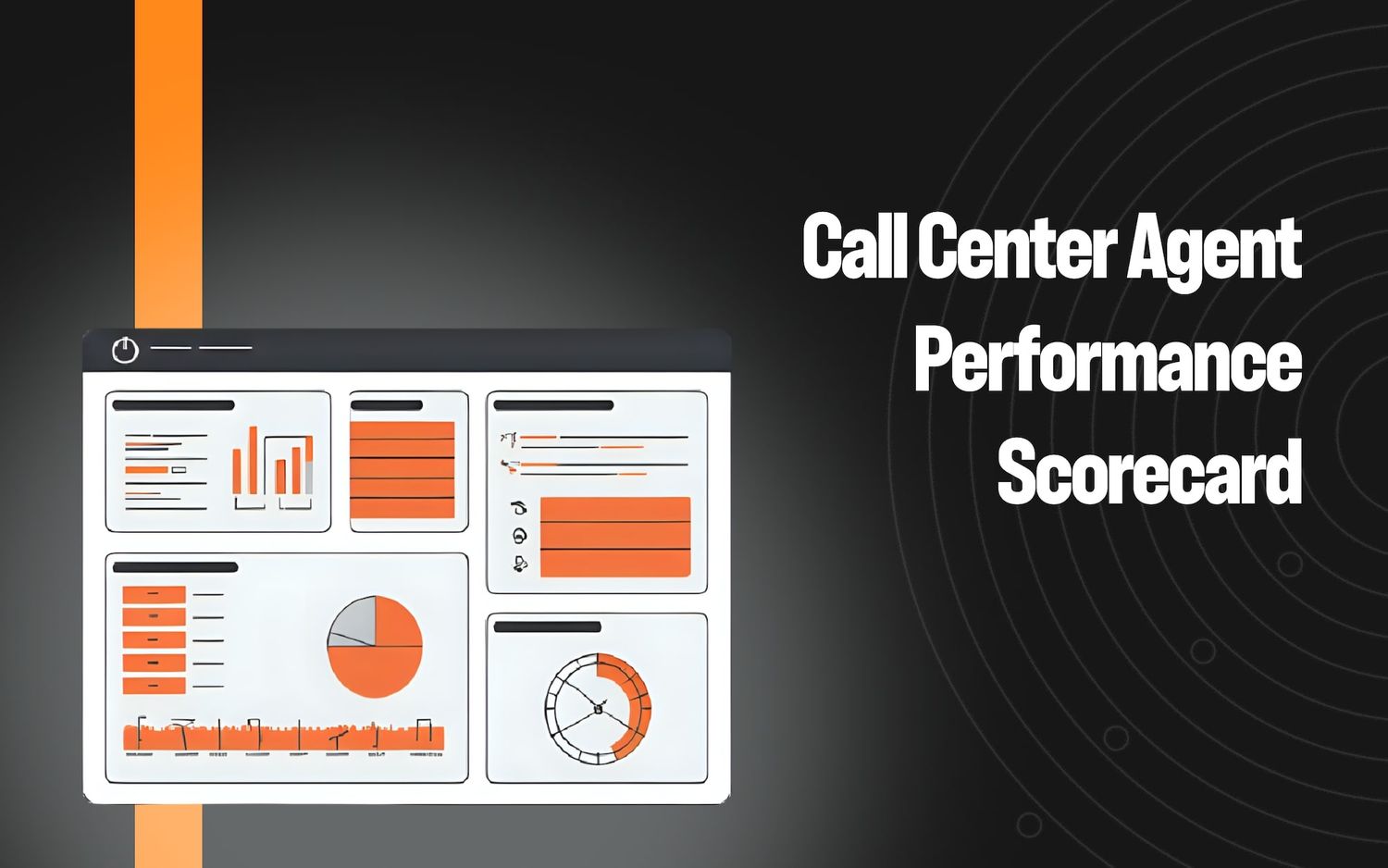Automate call center quality assurance the right way


Contact center quality assurance (QA) has traditionally been laborious and heavily reliant on manual processes. QA managers painstakingly review call recordings, checking them against checklists or scorecards to ensure adherence to company quality standards. However, this approach is inherently time-consuming and resource-intensive. Due to these limitations, most call centers can only evaluate a meager 1-3% of their recorded interactions. Contact centers would need armies of QA auditors to review all recorded interactions. Clearly, scaling up with hundreds of human QA specialists is an unsustainable solution for most contact centers.
But settling for evaluating just a tiny fraction of interactions presents its own set of problems.
- Blind Spots and Unidentified Issues: Relying on a small sample size creates blind spots. Crucial trends and recurring issues can easily go unnoticed, hindering proactive improvement efforts. Imagine a customer consistently expressing frustration with a specific product feature, but with such limited analysis, this vital feedback might never reach the development team.
- Inconsistent Assessments and Bias: Subjectivity in manual evaluations can lead to inconsistencies, particularly across multiple reviewers. Personal biases and varying interpretations can influence scoring, impacting the accuracy and fairness of the assessment process.
- Limited Coaching and Development: With limited review capacity, valuable coaching opportunities are missed. Agents lack personalized feedback and insights to refine their skills and enhance performance, potentially hindering their growth and development.
- Inefficient Resource Allocation: The time-intensive nature of manual QA restricts resources that could be better utilized for strategic initiatives or deeper analysis. This creates a bottleneck, limiting the overall effectiveness of the QA process.
Automating the QA process is a solution that can address these shortcomings, but there are many pitfalls to avoid when automation contact center QA. Not all QA automation tools are made equal and vary wildly in scope and quality. Let’s delve into the potential pitfalls to avoid when automating call center QA. The ideal QA solution should evaluate every conversation, no matter the channel or type, with near-human accuracy and using your existing QA scorecard and metrics. Learn more about selecting an Auto-QA solution with our 2024 Auto-QA platform buyers guide.
Automating all of the QA scorecard
While there are many contact center automation software on the market that claim to automate QA, there’s a lot of fine print to be read. It all comes down to the type of AI that’s being used. Legacy solutions typically use text analytics that involves matching keywords in various combinations to determine agent performance on certain metrics, more advanced solutions use AI that is trained by phrases to match with the customer conversations, and the best solutions use Generative AI, which can understand parameters of evaluation like a human can.
Text Analytics: Spotting occurrences of words
This approach matches pre-defined keywords or sequences of words to text excerpts within call transcripts. It can only be used to score conversations where the utterance of a specific set of words can define success. For example, a question on a QA scorecard would be “Did the agent brand the call?”. A text analytics solution would be able to match the name of the company to verify if the agent has said, “Hello, this is Level AI customer service. How may I help you.”
This type of automation, however, only lends itself to the most basic of QA scoring scenarios, like the presence of greetings or specific keywords indicating product features. More complicated QA questions like “Did the agent demonstrate empathy with the customer’s problem?” require a more complex AI solution to answer. Text analytics solutions struggle with nuances and context and are often prone to misinterpreting intent due to rigid matching.
Phrase Matching AI: Approximating Understanding
This approach requires users to imagine all of the ways a customer or agent may say a certain intent. For example, if we go back to the QA scorecard question, “Did the agent demonstrate empathy with the customer’s problem?” there are a number of ways the agent may say, “I understand,” “I’m sorry that sounds awful,” or a number of other phrases. With a phrase-matching AI, the user must pre-train the model to understand that a particular set of phrases are examples of the agent showing empathy, and the AI then finds patterns and can discover similar phrases that it wasn’t weren’t trained upon as examples of empathy too.
This type of AI can be used to automate scoring for certain elements of the scorecard, like adherence to the script and identification of common customer issues. It struggles with dynamic language, sarcasm, and unforeseen situations. It is definitely a step above the keyword-matching AI of yesteryear, but for many scorecards, it is limited to answering about 30% of them and at a limited accuracy.
Generative AI: Unveiling Intent and Meaning for Broader Coverage
To understand the quantum leap that is Generative AI, let’s consider an example scorecard question: “Did the agent adequately address the customer’s question?” For a keyword or phrase-matching AI solution, that is simply not an addressable question, as there’s no way to think of every possible way an agent can phrase an answer to a customer question without knowing what the question is beforehand. Generative AI utilizes sophisticated natural language processing (NLP) and machine learning to understand the underlying intent and meaning within conversations, going beyond keywords and phrases. A generative AI based QA solution works by understanding the scorecard question like a human can. It can then take the entire conversation into context to score it with near-human accuracy. This enables it to cover most organization’s custom QA scorecards in their entirety.
The best Gen AI solutions also go further by giving evidence and reasoning to support their scores, enabling manual QA managers to trust the AI scores with confidence. Learn more about Level AI’s industry-first 100% Auto-QA solution QA-GPT!
Maintaining near-human accuracy
Achieving near-human accuracy in automated quality assurance (Auto-QA) is paramount for contact centers seeking data-driven insights to support effective agent coaching and performance improvement. However, concerns regarding potential biases and discrepancies compared to human evaluators remain prevalent. Ensure trust and enable data-driven decision-making with:
1. High-Quality Transcription: The Foundation of Accurate Analysis
The accuracy of Auto-QA models hinges on the quality of the underlying transcriptions. Leading providers prioritize:
- Advanced Speech Recognition Technology: Utilizing sophisticated algorithms trained on diverse accents and speech patterns to minimize errors and ensure faithful representation of conversations.
- Contact cener data: Off the shelf solutions are often not suitable for the unique terminologies and needs of contact center conversations leading to poor accuracy. The best Auto-QA providers train their transcription models on contact center data and provide customer specific tweaks to suit their conversations.
- Continuous Improvement: Regularly evaluating and refining speech recognition models based on performance metrics and user feedback to maintain optimal accuracy over time.
By prioritizing high-quality transcriptions, Auto-QA providers lay the groundwork for reliable analysis and trustworthy insights.
2. Training on Contact Center-Specific Data: Tailoring Understanding to Your Unique Environment
Generic pre-trained models often struggle to capture the nuances of specific industry jargon, company protocols, and regional dialects prevalent in contact centers. To address this, leading providers:
- Leverage Domain-Specific Datasets: Train models on large datasets of contact center interactions relevant to your industry and company, enabling them to understand the unique language and context of your specific environment.
- Customize Evaluation Criteria: Collaborate with you to tailor evaluation criteria and scoring algorithms to align with your unique quality standards, business objectives, and customer service philosophy.
- Ongoing Learning and Adaptation: Employ continuous learning techniques to allow models to adapt to evolving language patterns, industry trends, and company-specific changes over time.
By training on your specific data and tailoring evaluation criteria, Auto-QA models develop a deeper understanding of your unique context, leading to more accurate and relevant insights.
3. Continuous Evaluation and Refinement: Ensuring Trustworthy Results
Maintaining near-human accuracy requires ongoing monitoring and refinement. Leading providers implement rigorous processes, including:
- Human-in-the-Loop Evaluation: Regularly compare automated scores with human evaluations to identify and address any discrepancies, improving model accuracy and mitigating potential biases.
- Error Analysis and Root Cause Identification: Analyze errors made by the models to understand the underlying causes and develop targeted interventions to prevent future occurrences.
By continuously evaluating and refining their models, Auto-QA providers ensure they deliver accurate and reliable results that you can confidently use to guide coaching and enhance agent performance.
Scoring all customer interactions (sales/service and channels)
While traditional call center quality assurance (QA) focused solely on phone conversations, the customer journey now encompasses a diverse range of touchpoints, including email, chat, text messaging, and social media. Failing to capture and analyze interactions across these channels creates blind spots and limits the potential for comprehensive performance improvement.
Channel-Agnostic Scoring: Unveiling Insights from Every Touchpoint
Leading Auto-QA solutions extend beyond call transcripts, seamlessly integrating with various communication channels:
- Email and Chat Analysis: Utilizing advanced natural language processing (NLP) to analyze text-based interactions, identifying sentiment, key themes, and adherence to communication protocols.
- Social Media Monitoring: Scanning public and private social media conversations for brand mentions, customer sentiment, and potential service issues, providing valuable insights into online reputation and brand perception.
- Text Message Review: Analyzing SMS interactions for sentiment, resolution effectiveness, and adherence to compliance regulations.
By capturing and analyzing interactions across all channels, Auto-QA paints a holistic picture of the customer journey, revealing previously unseen trends, areas for improvement, and opportunities to personalize the omnichannel experience.
Tailored Scorecards and AI Abilities: Addressing Unique Needs
Recognizing the distinct objectives of sales and service interactions, leading Auto-QA solutions offer:
- Separate Scorecards for Sales and Service: Develop customized scorecards with metrics specific to each function, ensuring evaluation aligns with unique team goals and performance standards.
- Sales-Specific AI Capabilities: Utilize AI models trained to identify upselling/cross-selling opportunities, assess customer needs, and analyze closing techniques, empowering sales teams to convert leads and maximize revenue.
- Service-Focused AI Abilities: Leverage AI models adept at analyzing customer sentiment, identifying recurring issues, and suggesting resolutions, enabling service teams to resolve issues efficiently and deliver exceptional customer service.
This tailored approach ensures each team receives relevant and actionable insights, optimizing performance, driving growth, and enhancing customer satisfaction across all touchpoints.
Keep reading
View all





